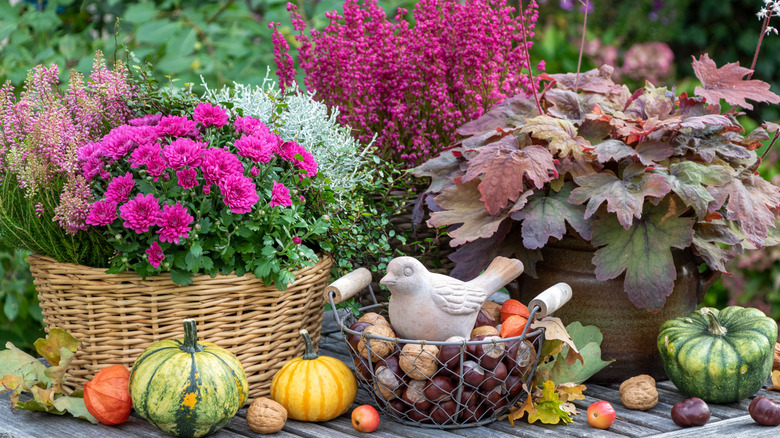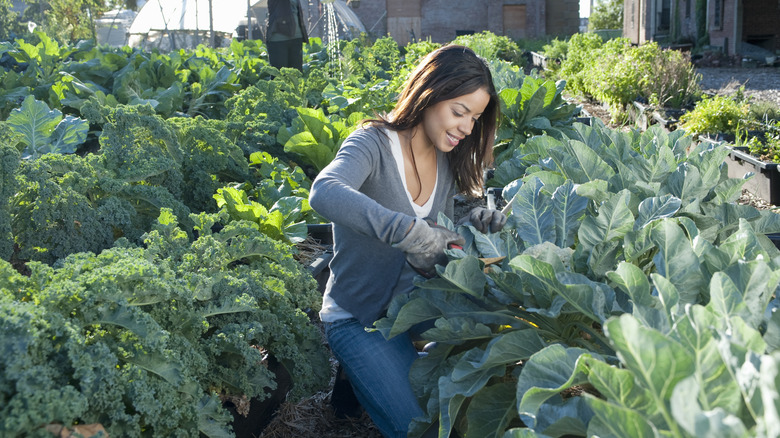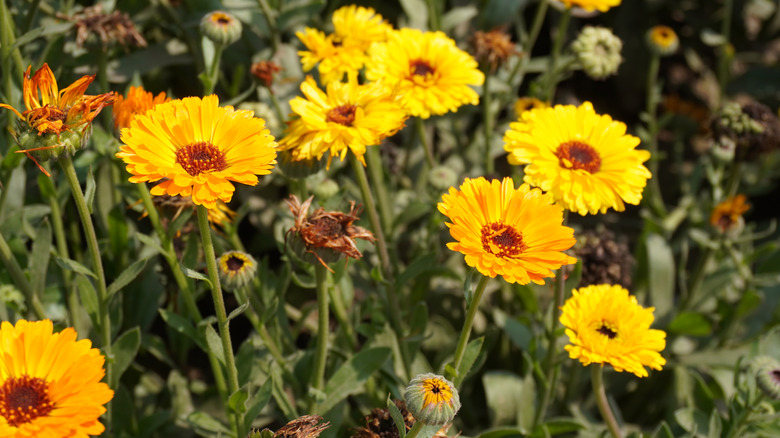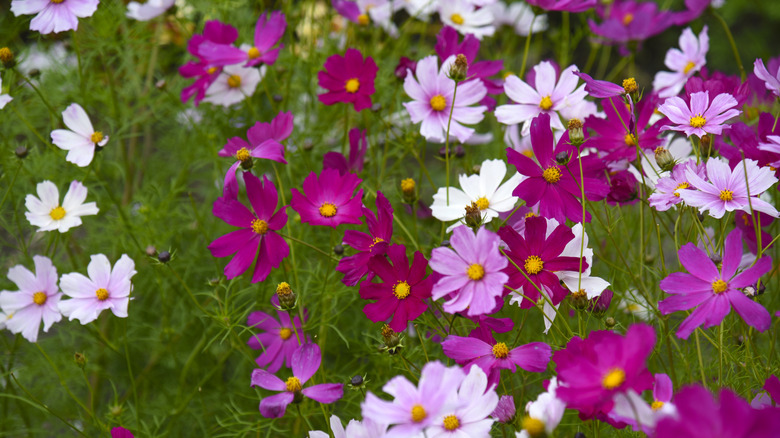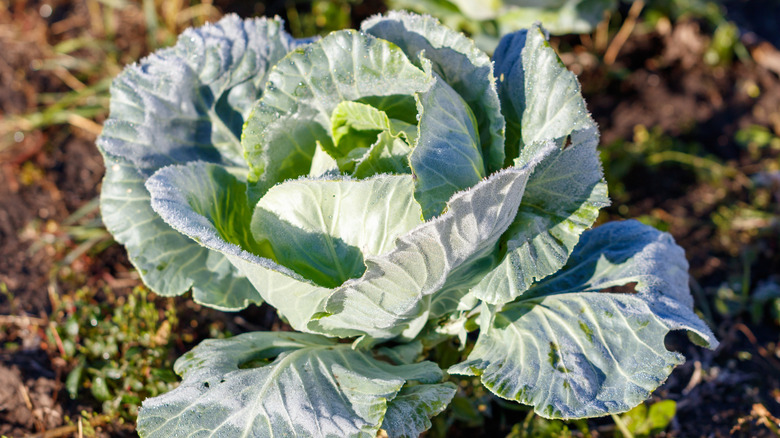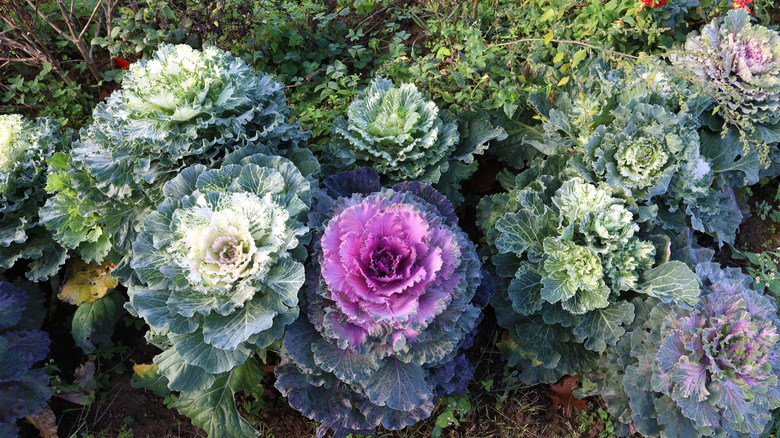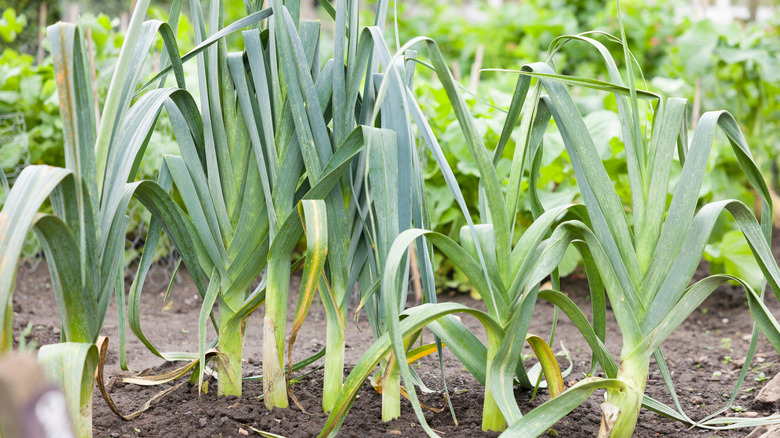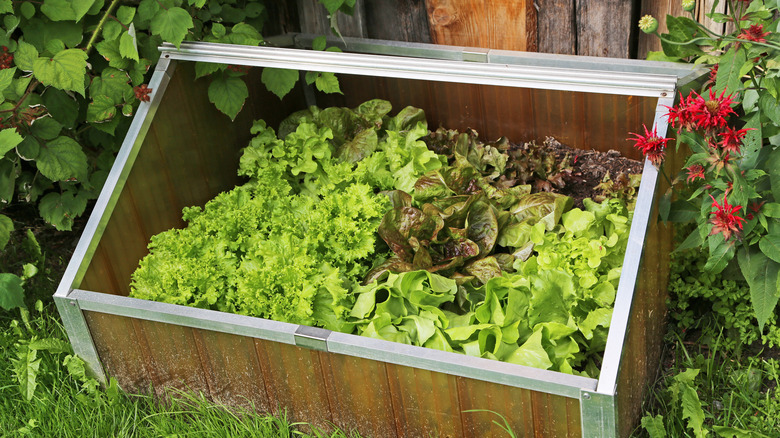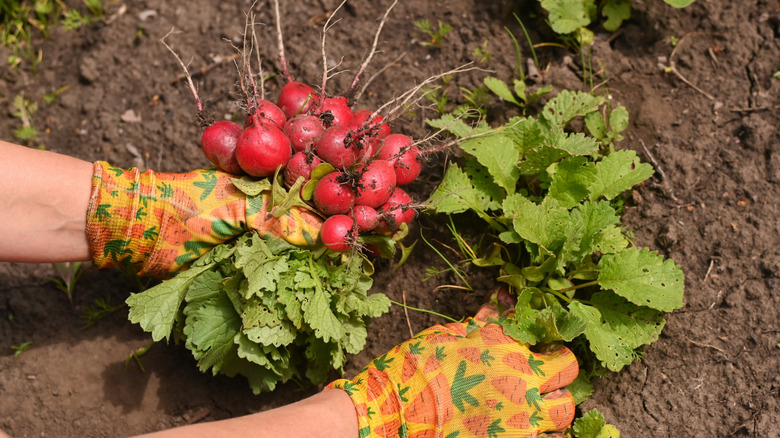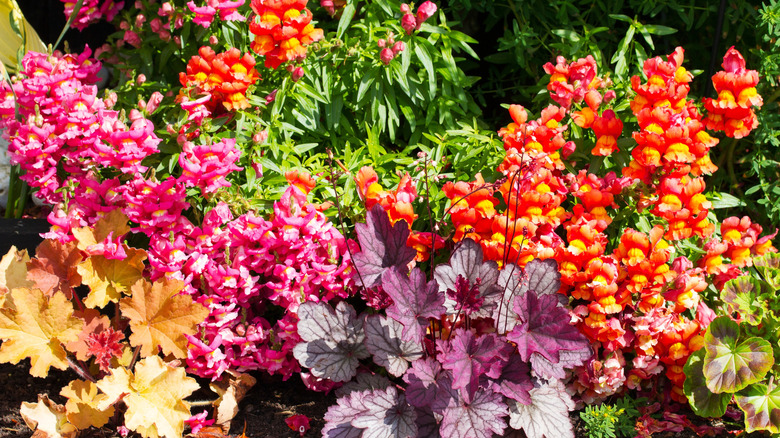15 Annuals To Plant Before Cold Weather Rolls In
We may receive a commission on purchases made from links.
The gardening season only lasts for so long — unless you're one of those clever gardeners who've figured out how to keep planting all year. If you are, once the end of summer rolls around, you've already got your eye on fall, winter, and spring. With a packet of seeds in one hand and a flat of annual bedding plants in the other, you're ready to set the stage for a garden that stays productive well into cooler weather and wakes up in the spring eager to bloom. For a variety of flowers, vegetables, and herbs to flourish in your garden this year and next, consider planting these 15 annuals before cold weather rolls in.
Resilient annual flowers will provide fall color in your garden, while the same cold-hardy vegetables you grow in the spring can also extend your edible harvest through the fall. Some annuals, like pansies and snapdragons, can even overwinter, bouncing back in the spring to provide early blooms. Similarly, there are several cold-hardy vegetables you can plant directly in the ground in the fall to give your garden a head start in the spring. Whether it's planting annual bedding plants or sowing annual seeds, your climate determines when you can plant, but gardeners who plan carefully can keep planting all the way until winter hits.
Whenever you're planning a fall garden with annual plants, it's smart to look through seed catalogs (either print or online) that feature a section on fall and winter gardening. The varieties listed on those pages are selected for their cold-hardiness and dependability as a fall crop, and you can easily find the right seeds for your growing zone.
Broccoli and cauliflower
If you've ever tried to grow broccoli or cauliflower (Brassica oleracea) during hot weather, you probably ended up with a mess of flowers. That's because these plants are members of the Brassicaceae family. They are well known for preferring cooler weather, and while they are grown during the traditional growing season in cooler climates, in warmer zones, they're best grown during the winter. In many places, you can add broccoli and cauliflower to your fall flower beds for filler and greenery before they eventually end up in your kitchen.
Calendula
When planting annuals in the fall, whether seeds or bedding plants, choose cold-hardy varieties that can handle light frosts. For example, calendula (Calendula officinalis) can tolerate temperatures as low as 25 degrees Fahrenheit. Calendula adds incredible color to fall garden planters and flower beds, and since it self-seeds readily, it can also be sown directly into the garden in the fall. Some gardeners use this method to reduce their workload in the spring.
Cilantro
Many plants continue to produce even with cooler temperatures and shorter days, and if you plan ahead, you can enjoy fresh, flavorful produce well into late fall and winter. If cilantro (Coriandrum sativum) is one of your favorite herbs, you're in luck, because it likes the cool, moist conditions that are typical in fall. It is cold-hardy down to about 10 degrees Fahrenheit. You can plant cilantro in September or even later, depending on your growing zone. To extend your growing season in cooler climates, cilantro is an excellent choice for cold frame gardening.
Cosmos
When you're tidying up your garden this fall, consider planting annual flowers that readily self-seed, like cosmos (Cosmos bipinnatus). Cosmos can be planted from seed in the fall to give your garden a head start for spring. However, timing is key in colder climates because you want to plant the seeds after a few frosts have passed. This ensures that they won't germinate until it's warm enough for them to survive. If you're in a warmer climate, such as zone 10 in Florida, you can grow cosmos in the fall without having to worry so much about the weather.
Dill
Dill (Anethum graveolens) is a popular self-seeding herb you can plant in the fall using the same methods described above for cosmos. You can use succession plantings of dill every two to three weeks through the summer to ensure a continuous supply of seeds. It takes about eight weeks for dill to be ready to harvest when grown from seed. Even in colder climates, it should do fine when planted in a cold frame. As an easy way to bring good insects into your garden, plant dill and cosmos together to create a safe haven for ladybugs.
Cabbage
While some plants balk at cooler weather, others thrive in it. Cabbage (Brassica oleracea) is an easy annual to grow as a late-season fall vegetable. Being a cool-season vegetable, it can tolerate temperatures down to 15 or 20 degrees Fahrenheit. Whether you plant ornamental or edible cultivars, cabbage is an excellent choice for cool-season gardens in the fall, but keep in mind that it might take up to three months before the heads are ready to harvest.
Kale
Like cabbage, kale (Brassica oleracea) is the same species as broccoli and cauliflower, and it's easy to see a recurring theme with this family of plants. Kale is another favorite annual to plant that includes both ornamental and edible varieties. It depends on your growing zone, but you can put kale bedding plants in the ground as late as October and November in some areas. In cooler climates, you may need to start the seeds in June, but kale is very cold-tolerant. It can even germinate in temperatures as low as 40 degrees Fahrenheit.
Larkspur
Larkspurs (Consolida spp.) are another group of cool-season annuals that can be planted in the fall to give your flower garden a head start in the spring. Larkspurs were once classified as Delphinium, a separate genus, which causes considerable confusion, but they are two separate groups. Larkspurs are annuals, while delphiniums are perennials. To get your garden prepared for when the weather starts to warm up again, sow larkspur seeds in the fall using winter sowing methods.
Leeks
The timing of fall planting varies for different plants in various climates, but if you've been thinking about growing leeks (Allium ampeloprasum), fall is a peak growing period. Leeks are a cool-weather fall crop for Zones 7 and above that can be planted in early fall. They take about three to four months to mature, so in cooler climates, you can extend the harvest season by planting seeds earlier in midsummer and using layered straw mulch or cold frames to retain access to the plants after it snows.
Lettuce
All types of lettuce (Lactuca sativa ) are surprisingly cold-hardy annuals. By the time fall rolls around, your spring-planted lettuce is over and done with, and once the cooler weather starts to set in, it's an excellent time to plant lettuce. Lettuce tastes best when grown during cold weather. However, in cooler climates, you'll be lucky to keep it alive even in cold frames. It's another plant that readily self-sows, so you can also include it in your fall seed planting by putting it directly in the soil for an early spring crop.
Pansies and violas
For another cheerful pop of color to add to your fall plantings, pansies (Viola x wittrockiana) are a cold-hardy annual that can even survive the winter in many climates. Hardy in Zones 6 through 10, their cold-hardiness depends on your climate and the amount of protection you provide. However, pansies can handle dips down into single digits. With their bright colors, even if you're only growing a few plants in a small cold frame, pansies are worth adding to your garden before cold weather sets in.
Radishes
We've mentioned a few vegetables, including broccoli, cabbage, leeks, and lettuce, and now it's time to look at radishes (Raphanus raphanistrum subsp. sativus). Radishes are one of the fastest-growing crops in the garden, with some of the earliest varieties maturing in as little as three weeks. Radishes thrive in cool weather, making them an excellent fall crop, and they come in many sizes and flavors for an endless variety.
Snapdragons
Snapdragons (Antirrhinum majus) are native to Southwestern Europe, and in their native habitat, they are winter annuals. This just means that they germinate in the fall and, after growing all winter, they come out blooming in the springtime. This is how many gardeners in warmer climates (zones 7 through 10) treat snapdragons, by planting them in the fall for lively color in the spring. Snapdragons are tender perennials in the wild, but are typically grown as annuals. You can add them to fall planters or use them as bedding plants for late autumn color.
Spinach
Spinach (Spinacia oleracea) is another cool-season annual that can be planted in the fall. Spinach grows best in temperatures between 50 and 60 degrees Fahrenheit, but even when the thermometer drops to 15 or 20 degrees, young spinach seedlings can survive. Since spinach is a low-growing crop, it's an ideal choice for tunnels. Purchase a simple one like Haxnicks' easy poly tunnel, or create your own hoop house with plastic and PVC pipes.
Turnips
Turnips (Brassica rapa) are the final plant on our list, but there are many more out there. Turnips, another group of cool-season annuals, can be started in spring, late summer, and fall and take about two months to mature. For variety, you can plant a fall crop of turnips alongside carrots and beets, a couple of other cold-hardy root vegetables that you can sow in the fall and harvest through the winter.
